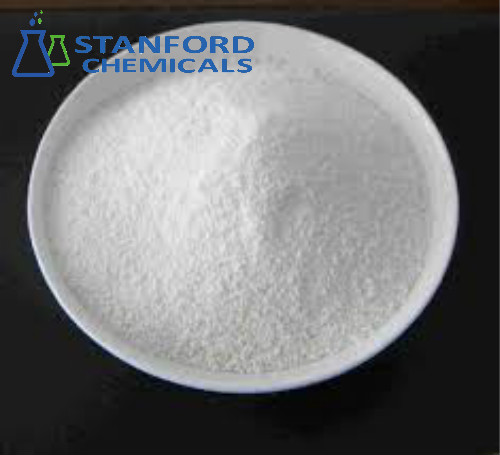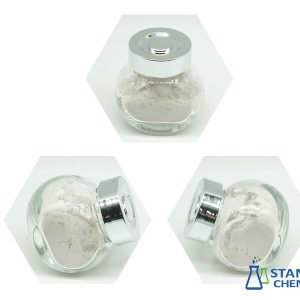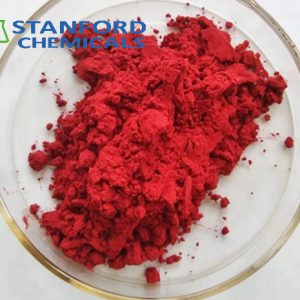- Home
- Foods and Nutraceuticals
- 030-000-362 Myo-inositol Trispyrophosphate (CAS: 623552-11-4)
030-000-362 Myo-inositol Trispyrophosphate (CAS: 623552-11-4)
| Product Name | Myo-inositol Trispyrophosphate |
| CAS No. | 623552-11-4 |
| Appearance | White powder |
| Type | Pyrophosphate |
| Keywords | Myo-inositol Trispyrophosphate, ITPP |
| Related products | Medical Grade Sodium Hyaluronate, Chondroitin Sulfate, Dihydromyricetin, Herbal Extract |
| Synonyms | ITPP |
- Description
Description
Myo-inositol Trispyrophosphate Description
Myo-inositol Trispyrophosphate (ITPP) (CAS: 623552-11-4) is an inositol phosphate, a pyrophosphate, a drug candidate, and a putative performance-enhancing substance, which exerts its biological effects by increasing tissue oxygenation. The Myo-inositol Trispyrophosphate (ITPP) is a modifier of hemoglobin that enters the red blood cells and modifies the hemoglobin properties, allowing for easier and better delivery of oxygen by the blood[1].
Myo-inositol Trispyrophosphate (ITPP) (CAS: 623552-11-4) is an inositol phosphate, which is a group of compounds that play an important role in cellular function and cell signaling.
ITPP works by binding to the membrane of red blood cells (hemoglobin), which promotes the release of oxygen from the cells.
Myo-inositol Trispyrophosphate Specifications
| Product Name | Myo-inositol Trispyrophosphate |
| CAS Registry Number | 623552-11-4 |
| Molecular Formula | C6H12O21P6 |
| Molecular Weight | 605.99 g/mol |
| Assay | ≥99% |
| Solubility | H2O: 50 mg/mL |
Myo-inositol Trispyrophosphate Applications
Myo-inositol Trispyrophosphate (CAS: 623552-11-4) is a membrane-permeant allosteric regulator of hemoglobin that mildly reduces its oxygen-binding affinity, which shifts the oxygen-hemoglobin dissociation curve to the right and thereby increases oxygen release from the blood into the tissue. Phytic acid, in contrast, is not membrane-permeant due to its charge distribution.
Rodent studies in vivo demonstrated increased tissue oxygenation and dose-dependent increases in endurance during physical exercise, in both healthy mice and transgenic mice expressing a heart failure phenotype.
Myo-inositol Trispyrophosphate is believed to have a high potential for use in athletic doping, and liquid chromatography–mass spectrometry tests have been developed to detect ITPP in urine tests. Its use as a performance-enhancing substance in horse racing has also been suspected and similar tests have been developed for horses.[1]
By increasing oxy-hemoglobin dissociation, Myo-inositol Trispyrophosphate has the potential to counteract the effects of hypoxia, a critical regulator of angiogenesis and cancer progression. ITPP inhibited the angiogenesis of the chorioallantoic membrane (CAM), as analyzed with an original program dedicated to automated quantification of angiogenesis in this model. ITPP also markedly reduced tumor progression and angiogenesis in an experimental model of U87 glioma cell nodules grafted onto the CAM. These results point out the potential of ITPP for the development of a new class of anti-angiogenic and anti-cancer compounds.[2]
Reference
Marta Oknińska, Bouchra El-Hafny-Rahbi, Aleksandra Paterek, Urszula Mackiewicz, Claire Crola-Da Silva, Klaudia Brodaczewska, Michał Mączewski, Claudine Kieda: Treatment of hypoxia‐dependent cardiovascular diseases by myo‐inositol trispyrophosphate (ITPP)‐enhancement of oxygen delivery by red blood cells. https://doi.org/10.1111/jcmm.14909
Gabin Sihna, Thomas Walter, Jean-Claude Klein, Isabelle Queguiner, Hiroshi Iwao, Claude Nicolau, Jean-Marie Lehn, Pierre Corvol, Jean-Marie Gasc: Anti-angiogenic properties of Myo-inositol Trispyrophosphate in ovo and growth reduction of implanted glioma. https://doi.org/10.1016/j.febslet.2007.01.079
[1] https://en.wikipedia.org/wiki/Myo-inositol_trispyrophosphate
[2]GabinSihna, ThomasWalter, Jean-ClaudeKlein, IsabelleQueguiner, HiroshiIwao, ClaudeNicolau, Jean-MarieLehn, PierreCorvol, Jean-MarieGasc: Anti-angiogenic properties of myo-inositol trispyrophosphate in ovo and growth reduction of implanted glioma. https://doi.org/10.1016/j.febslet.2007.01.079







